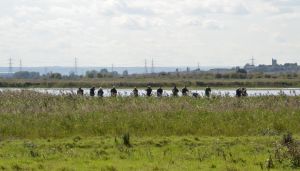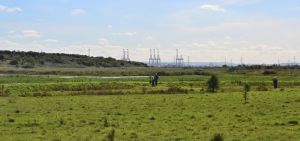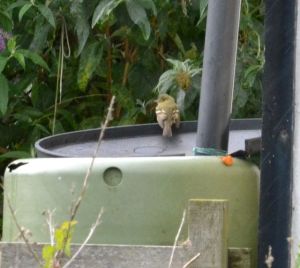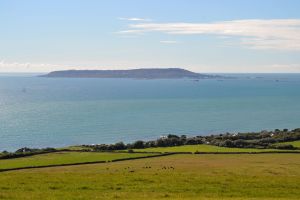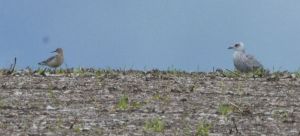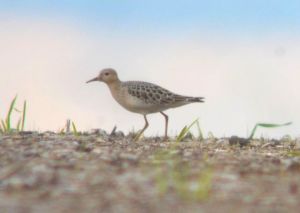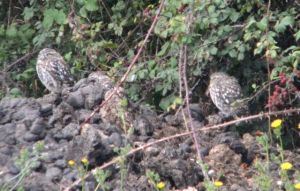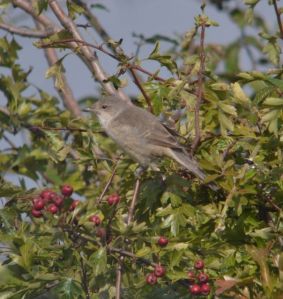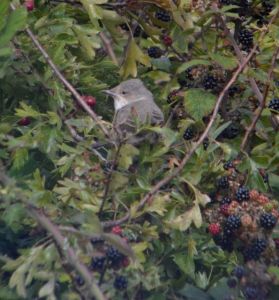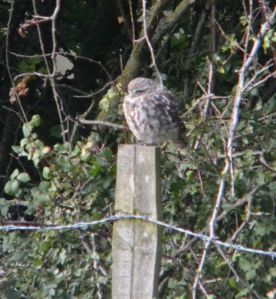With Tuesday’s excitement passed there remained the matter of observing a juvenile Wilson’s Phalarope that was present for it’s third day beside the Thames estuary in Essex. That is another Nearctic wader I have just one old record for at Staines reservoir, Surrey in 1997. On that occasion the bird was on the opposite side of that huge water body to myself and I relied on someone else to point it out. Hence my interest in a better, current era sighting this week.
This largest of the three Phalaropes breeds in north America and there are a few British records annually of young passage birds, mostly in September. Very different in behaviour to its Grey and Red-necked cousins, Wilson’s is less inclined to swim and more at home on land. The Essex bird was reported early on RBA today and I set off mid-morning in clear, sunny weather conditions; such a contrast to the day before.
Upon parking in RBA’s recommended side street just before 1pm, who should I meet but Oxonbirder Terry Sherlock (aka Tezzer), who was on his way home from Dungeness. There the Empidonax Flycatcher had unfortunately not been relocated today, disappointing the many birders who had travelled down hoping to see it. Myself, Terry and another birder walked out together to Vange Marsh (TQ730870), an RSPB reserve created in 2005 that has a large freshwater lagoon with islands, a smaller saltwater lagoon, reed beds and some grassland with patches of scrub.
We joined a small group who were scanning the freshwater lagoon, upon which the Wilson’s Phalarope was fairly easy to pick out due to its distinctive jizz and energetic feeding action. But the distant bird was directly into the sun and hence a mere silhouette observed from the north. After Terry left for home I walked around to where a few birders were watching the Phalarope from the eastern side of the lagoon. From that spot the plumage detail and slim black bill – as illustrated by the outsourced image (below) – were much easier to decipher. Spotted Redshank were also active on the lagoon, always a good wader to find.

Vange Marsh Wilson’s Phalarope (juv) © Steve Gantlett
I then watched the bird for around 30 minutes. Grey and Red-necked Phalaropes, each of which I have observed a few times, typically spin around on the water’s surface whilst feeding. But this third, fresh water species behaves much more like other waders. Wilson’s is said to resemble Wood Sandpiper by the Helm guide to confusion species, but I couldn’t really see that. To me it looked like what it is: a larger, longer-billed Phalarope that wades instead of swimming. I was able to thoroughly acquaint myself with this third north American wader of my autumn today on what was another very worthwhile day out.

